
The story of Amlés Wines, much like a life well-lived, unfolds in many parts. It is only in looking back that one can see how each chapter on the journey leads to the next, until an entire adventure has materialized before our eyes. The Amlés journey, as told in chapters, is shared below. As the journey continues, new chapters will be added.

Chapter 7: A Wine Enthusiasts’ Guide to Crafting the Perfect Wine Cellar
Chapter 7: A Wine Enthusiasts’ Guide to Crafting the Perfect Wine Cellar
A testament to your dedication to the craft of wine collecting and enjoyment.
Starting Point: Define Your Needs
Before you lay the first stone or install the first rack, consider what you want from your wine cellar. Begin by assessing your collection size, buying habits, and the types of wine you wish to store. This will influence the size of the cellar and the storage solutions you’ll need. Think about whether your cellar is for long-term aging of fine wines or if it will serve also as a showpiece for entertaining.Location, Location, Location
The location of your wine cellar is paramount. Traditional underground basements are popular due to their naturally cool and stable temperatures, but modern technology allows for the creation of wine storage in various places, from a dedicated room to a converted closet. Choose a spot away from direct sunlight, with consistent humidity and temperature, or be prepared to invest in climate control systems.Climate Control: The Heart of the Cellar
Wine is sensitive to temperature, light, and humidity. Ideally, your cellar should be kept at around 55-58 degrees Fahrenheit with a humidity level of 60-70%. These conditions prevent corks from drying out and wine from aging too rapidly. Invest in a high-quality climate control system, which includes a cooling unit, insulation, and a vapor barrier to maintain these conditions year-round.Racking Systems: Storage with a Purpose
The racking system is where form meets function in your wine cellar. Racks can be made from various materials such as wood, metal, or even acrylic, and should be chosen based on the size and shape of your collection. Consider the accessibility and visibility of your bottles, as well as the cellar’s overall aesthetics. Modular systems can offer flexibility, while custom shelving can maximize space efficiency.Lighting: Setting the Mood
Proper lighting is crucial, both for the ambiance and the preservation of wine. LED lights are a popular choice because they emit less heat and UV radiation. Subdued, soft lighting not only creates an inviting atmosphere but also protects your wine from light damage, keeping your labels visible and your vintages safe.Security and Monitoring:
Protecting Your Investment For peace of mind and protection of your investment, consider security features like locks and alarms. Additionally, a monitoring system can keep track of the cellar’s environment, alerting you to any fluctuations that could jeopardize your collection.Where to Get Advice and Education
Building a wine cellar is not a small feat, and seeking professional advice can be invaluable. Consult with wine cellar construction experts who can help design and implement your vision. Additionally, sommeliers and wine merchants can offer insights into what wines to collect and how to care for them. There are also numerous books and online resources dedicated to wine collection and cellar management.Aesthetic Touches: Personalizing Your Space
Lastly, personalize your wine cellar. Add a tasting table, artwork, or any other touches that reflect your personal style. Remember, the cellar is not just a storage space – it’s a sanctuary for your wine and, potentially, a social space to enjoy it.
Your wine cellar is not just a storage space – it’s a sanctuary for your wine and a space to enjoy it.
- Scott Miller
Chapter 6: The Golden Ratio in Winemaking
Chapter 6: The Golden Ratio in Winemaking
The artistry and skill of the winemaker in crafting a well-balanced and expressive blend.
The “Golden Ratio” in blending refers to a specific proportion of grape varieties used to create a balanced and harmonious wine. Join us as we uncover the precision and balance that winemakers infuse into every bottle, creating wines that dance on the palate.
Proportionality for Structure
The Golden Ratio in wine blending often involves a predominant grape variety that provides structure and backbone for the wine. For example, in a Bordeaux-style blend, Cabernet Sauvignon might be the dominant grape, compromising around 60-70% of the blend. This high proportion contributes to the wine’s tannic structure and aging potential.
Mid-Palate Richness with Secondary Varietals
Complementing the dominant grape, secondary varieties are used to enhance the mid-palate richness and add complexity. Merlot, for instance, is commonly used in Bordeaux blends to contribute softness and fleshiness. In the Golden Ration, Merlot might make up around 20-30% of the blend, providing a lush and rounded character.
Aromatic Complexity with Accent Varietals
The Golden Ratio also includes accent varietals, which are used in smaller proportions to contribute aromatic complexity and distinctive flavors. Cabernet Franc, known for its floral and herbaceous notes, could be used in a 10-20% proportion to add a layer of complexity and nuance to the blend.
Balancing Tannins and Acidity
The Golden Ratio is not just about the types of grapes, but also about balancing key elements like tannins and acidity. The selected proportions aim to create a wine where tannins provide structure without overpowering, and the acidity adds brightness and freshness. Achieving this balance is essential for well-rounded and age-worthy wine.
Adaptability to Regional Styles
The Golden Ratio isn’t a rigid formula, but a guideline that winemakers adapt based on regional styles, vineyard characteristics, and personal preferences. It allows for flexibility, empowering winemakers to showcase the unique qualities of their terroir while maintaining a sense of balance. As a result, the Golden Ratio might vary slightly from one winery or region to another.
Understanding and applying the Golden Ratio in wine blending requires a nuanced approach, considering the specific qualities of each grape variety and the desired style of the final wine. It’s a tool that reflects the artistry and skill of the winemaker in crafting a well-balanced and expressive blend.
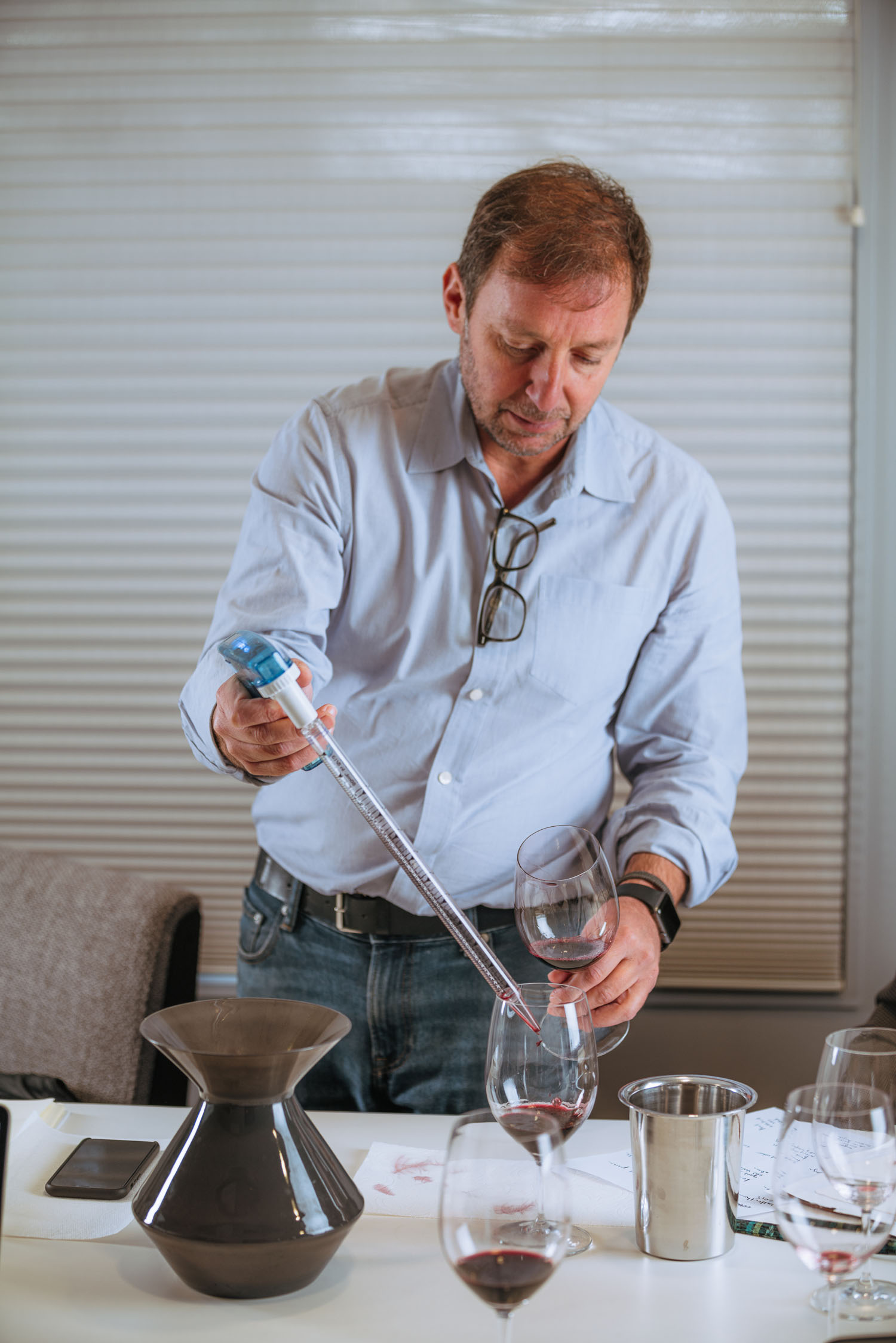
Achieving balance is essential for well-rounded and age-worthy wine.
Chapter 5: A Well-lived Life is an Artful Journey
Chapter 5: A well-lived life is an artful journey
What we love about wine is the same for great art.
The best stories are always about the journey to the top of the mountain, not about the summit itself. How we got here is always a better story than where we are.
A well-lived life is an artful journey, built over time as a collection of moments. It is the appreciation for the moments of life that brought another great passion—a love of art.
What we love about wine is the same for great art—both have the ability to capture the imagination and allow for interpretation and exploration. Beautiful art captures a moment in time and can move you to overwhelming joy. Wine is much the same. Both encapsulate a place or idea at an exact time to be appreciated later. While we can always come back to a piece of art to appreciate it, with wine, we must take this beautiful thing and destroy it in order to truly appreciate it. There will never be another moment for this wine. Once we have consumed it, it is now part of our story and how we move through the world.
A project the size of the creation of Amlés is the culmination of lifetimes of experiences, dreams, and appreciations. Scott and Sharon have created a team from the most wonderful group of people who all add their own passions to Amlés.
Winemaker Philippe Melka brings years of experience and passion for capturing the best moment of a vineyard in a bottle to Amlés. Artist JD Miller is adding his signature ability to capture energy and motion with his art to the project. Each bottle of the Portrait series wines will feature an honored figure from our past brought forward with a hand-painted “mask” from JD’s brush.
Amlés is a wine made without compromise. The intention is that every bottle of Amlés is a journey through the moments that make up a life well-lived. Every bottle is also a call to build community around an appreciation of history, culture, art, and giving back—ensuring that the Amlés journey, and story, continues.
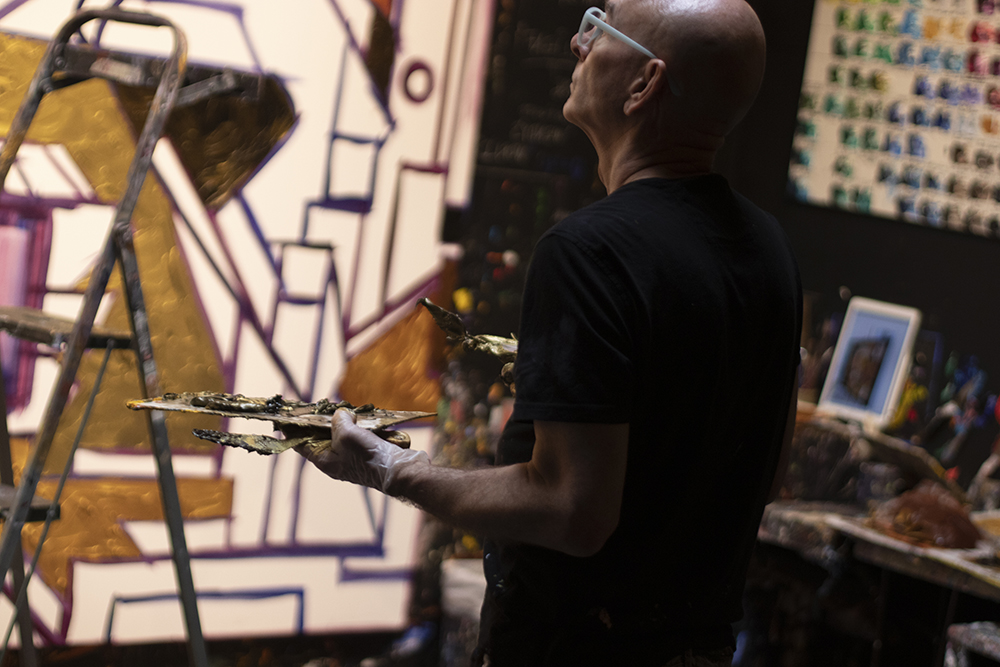
As a Reflectionist, I paint what is reflected from the world around me. - JD Miller
Chapter 4: When Was the First-Time Wine Spoke to You?
Chapter 4: When was the first-time wine spoke to you?
A wine born from and for experience.
When was the first time wine really spoke to you? The first time you looked back into the glass with a sense of astonishment and curiosity. What did that moment stir in you?
“Amlés is the direct product of our life’s experiences. We have been lucky enough see our hard work progress past unimagined milestones and to now have the opportunity appreciate and share that success. We are creating a wine brand for tomorrow firmly rooted in the time-honored traditions that have shaped us, the freedom to try new things, and the willingness to honor all that has come before with a new perspective.” – Scott Miller
For Scott, the start of Amlés can be tracked back to a glass of 1969 Gevrey-Chambertin from a dusty bottle found in a friend’s basement in 1979. The flood of awe, inspiration, and curiosity from one glass of wine created the beginning of a lifelong passion. A seed was planted that would grow slow and strong in the decades to come.
In the years since, Scott and Sharon have been lucky enough to build a life full of the romance of hard work and success. Along the way, the power of wine to build instant community around the dining table or to inspire the sharing of passions and ideas has been central to their life. Meals shared alongside remarkable wines have made for some of life’s best moments.
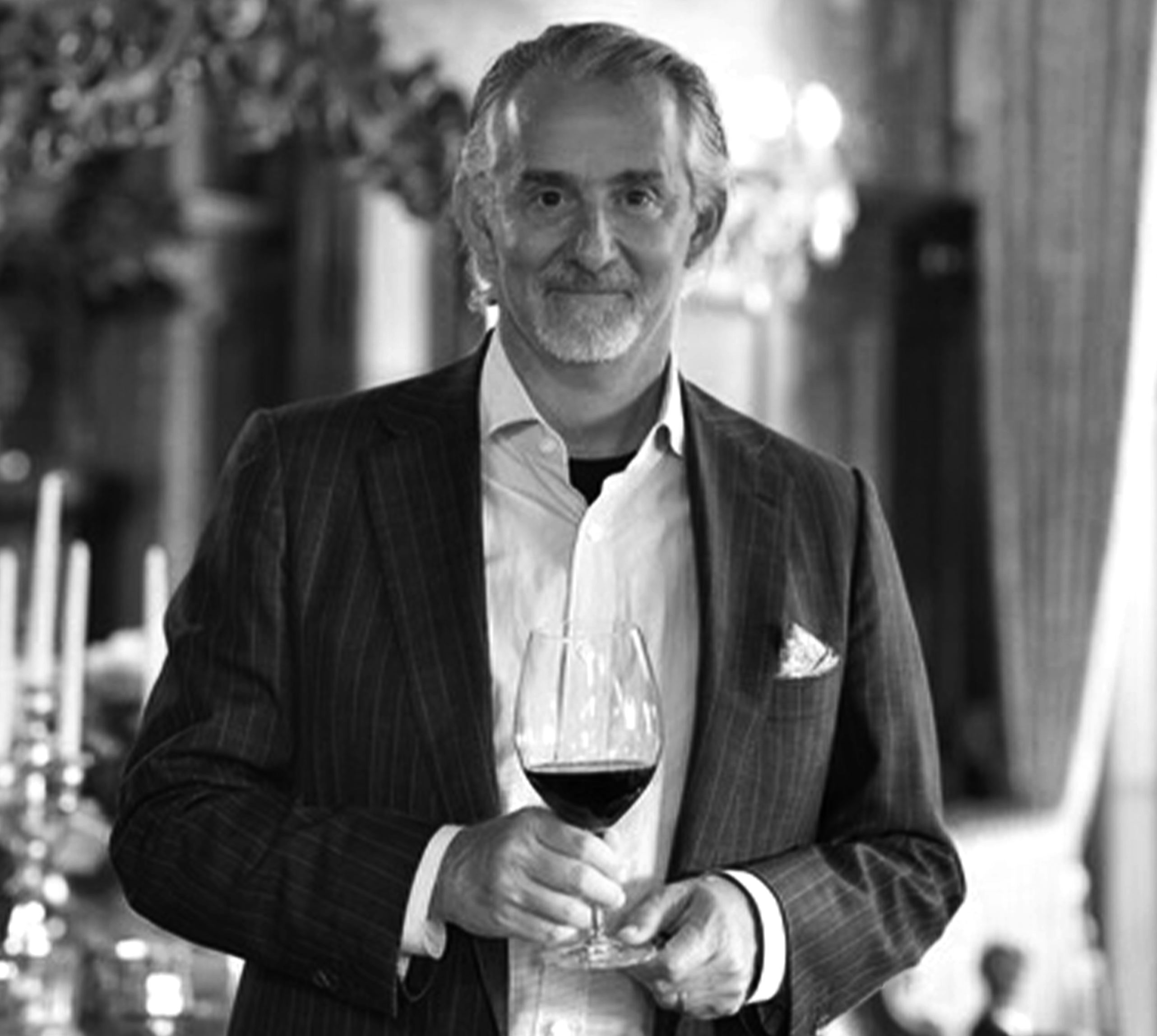
This wine is a very special project that reflects our belief that the past holds the keys to our future. - Scott Miller
Chapter 3: A Return to the Early Days of Our Nation
Chapter 3: A return to the early days of our Nation
Full of potential and a simplicity born of the earth from strong roots
Let’s return to the early days of our Nation. Selma is a property born of the time, near Leesburg in northern VA. Prior to 1810, the property was part of a larger estate owned by the Stevens Mason family, a brother of the Bill of Rights “father” George Mason. “Selma” was inspired by a Gaelic word meaning “a beautiful view.” Stevens and his wife Ann Thompson Mason named the property after Ann read the Ossian poems of the Scottish poet James McPherson. Stevens and Ann Mason were visited often by their friend Thomas Jefferson.
Stevens had several children, including his son Armistead Mason. After Stevens’ early death, a portion of the family property was deeded to Armistead who built the first dwellings and home on the property in 1810. Armistead became both a respected Brigadier General and a U.S. Senator during the early 1800s. In 1819, a famous duel of honor occurred killing Armistead Mason.
After a fire near the turn of the century, the property was purchased by the Col. EB White family who built a new main house in 1902. That home is still there today.
In 2016, Scott Miller and Sharon Virts begin to restore the historic home, after decades of neglect. They were instantly caught up in the energy of bringing life back to a place once filled with people, the constant motion of a busy household, and the center of society. The foundation was like a great vineyard—full of potential and a simplicity born of strong roots. From a sturdy foundation rooted deep in the earth, the energy of time is captured in the vines, begins to grow, and becomes something new. Like their restored home, Amlés was born from soil and through effort and energy became something to appreciate for now and decades to come.
This massive project of restoring the hum of life to a grand home was the final catalyst that set Amlés on its own path: a moment of synchronicity when Scott and Sharon’s next dream became obvious. To create a new wine that reflected the couple’s appreciation of history, their desire to celebrate and share a life well-lived, and their commitment to further the momentum of progress in the communities they love.
Scott and Sharon are lovers of great food and great wine, and most importantly, they love to share it with close friends and family. After spending many years traveling to the Napa Valley, they bought a home in the town of Yountville to be closer to the place they love and knew one day it would lead to creating something special. Amlés is that something.
Restoring the hum of life to a grand home was the final catalyst that set Amlés on its own path. – Sharon Virts
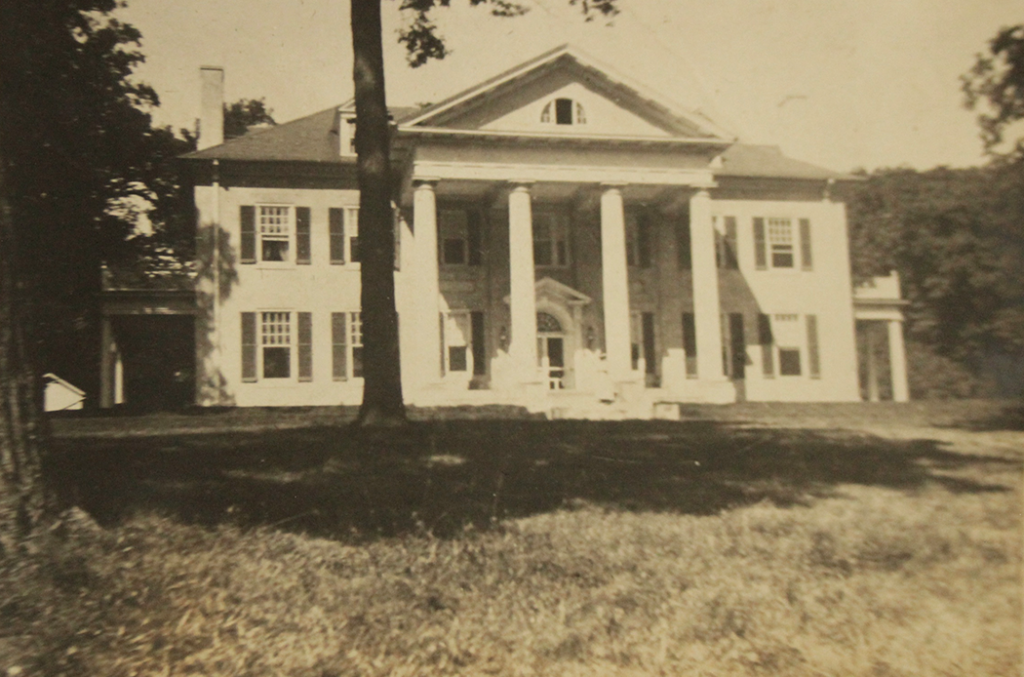


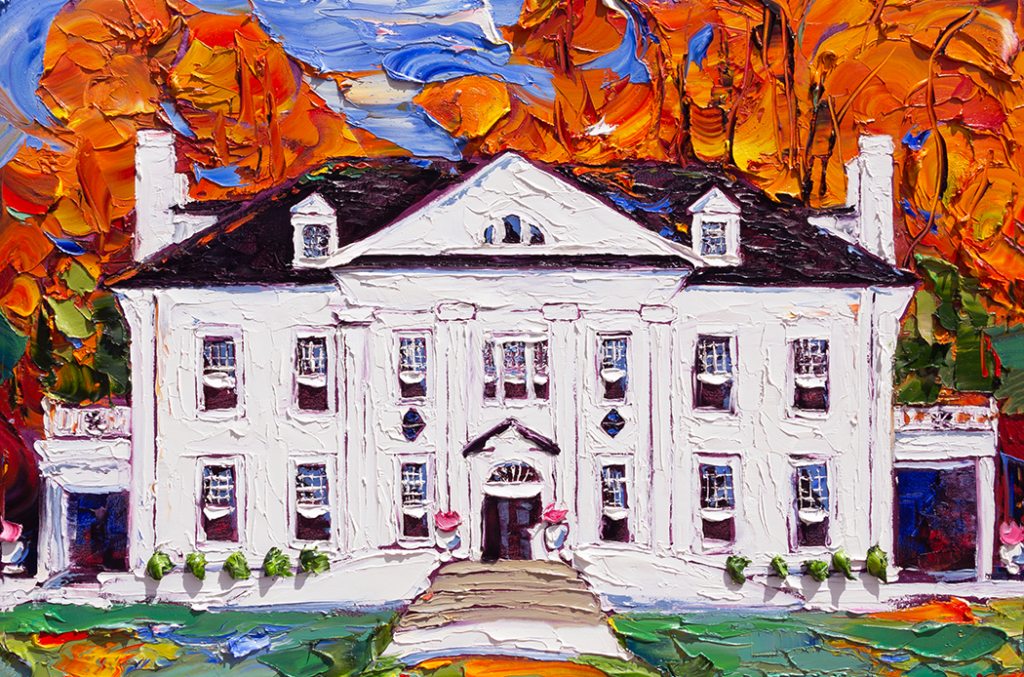
Chapter 2: Philippe Melka and Château Haut-Brion
Chapter 2: Philippe Melka and Château Haut-Brion
A harkening back to where Thomas Jefferson had been mesmerized.
This story leads us back to France and Château Haut-Brion, but this time more than 200 years have passed. It’s the summer of 1990, a sweltering one all over Europe, destined to ripen a great wine vintage.
A young man hunches over in a field of vines, with gravel constantly crackling underfoot as he strides up and down the rows. Using an electric set of clippers wired to a battery pack on his belt, he clips hard green clusters of underripe Cabernet Sauvignon grapes like a surgeon, dropping them on the ground, one by one.
This young man, armed with a degree in geology and a master’s in agronomy, is hard at work in his new position as an intern at the famous Château Haut-Brion, where Thomas Jefferson had been mesmerized 200 years earlier. The young man is working on his first assignment from winemakers Jean Delmas and Jean Philippe Masclef: an experiment in crop thinning, to see how timing the green harvest affects specific blocks.
That young man is Philippe Melka, a native of Bordeaux and who we know today as one of the Napa Valley’s most acclaimed and sought-after winemaker. During the five months he spent at the first-growth Haut-Brion, Melka’s eyes were opened to not only how great a wine from Bordeaux could be, but also the importance of small minutiae in viticulture and winemaking.
He took his knowledge with him and built upon it again and again, first at Dominus Estate in Yountville, Château Pétrus in Pomerol, and then at Ridge Vineyards in the Santa Cruz Mountains. And he was only getting started.
One of Melka’s signatures is that he is first and foremost a man of the soil. His goal is simply to let the earth express itself in the glass and maximize the expression of ripe fruit. Taste the range of his work and it becomes apparent that nothing is overdone; his wines exalt freshness, structure and finish in contrast to power and fruit, much like the wines of Bordeaux, but with the influence of California sunshine.

In order to craft something uniquely special we looked to our past so we might create a wine for the future. – Philippe Melka
Chapter 1: The Story of Amlés Begins With Thomas Jefferson
Chapter 1: A Story of Place and Time
The story of Amlés begins with Thomas Jefferson.
Amlés Wines is a story of place and time; from the 2000-year-old vineyards of Bordeaux, to the first vineyard plantings of 18th century central Virginia, to the coming of age of the vineyards planted in the 1800’s in the Napa Valley. Old-world, new-world. Tradition, modernity.
Amlés Wines is also the story of an estate called Selma in Loudoun County, Virginia. The first home on the estate was built in 1810. This story, however, begins even earlier—with Thomas Jefferson.
Jefferson spent six years in France from 1784 as the fledging American Ambassador, replacing the esteemed Benjamin Franklin. Jefferson’s French wine education came from sitting at the dinner table with old Ben and enjoying Ben’s knowledge of wine while sampling the wines from his cellar.
Jefferson traveled the French countryside for many months in 1787, from Paris east through the Burgundy region, south through the Rhône valley, on to Marseilles, and finally heading west towards the Atlantic coast to Langon, home to what became his favorite white wine: Château d’Yquem. Finally, Jefferson arrived in Pessac, Bordeaux in May of 1787.
On the 24th of May, he visited Château Haut-Brion, which would become his favorite red wine. After tasting the famous wine, Jefferson purchased 24 cases for shipment to his home at Monticello in Albemarle County, Virginia. Today, in the cellars at “Obrion” there is a plaque and a bust of Jefferson to commemorate the visit and his promotion of the quality of the wines of the Bordeaux region.
Prior to Jefferson’s time in France, he dreamed of starting a vineyard in the hills around his Virginia home with the aim to one day to create a wine that would rival the wines of France. In 1773, he and Italian viticulturist Filippo Mazzei planted 2,000 acres of European vitis vinifera vines. While they did have some early success, it was unfortunately short-lived. After a few years and with the Revolutionary War underway, the vineyard soon succumbed to the ravages of pests and neglect.
This story leads us back to France and Château Haut-Brion, but this time more than 200 years had passed. It’s the summer of 1990, a sweltering one all over Europe, destined to ripen a great wine vintage. A young man hunches over in a field of vines, with gravel constantly crackling underfoot as he strides up and down the rows. Using an electric set of clippers wired to a battery pack on his belt, he clips hard green clusters of underripe Cabernet Sauvignon grapes like a surgeon, dropping them on the ground, one by one.

Wine brightens the life and thinking of anyone. - Thomas Jefferson
Portrait by Ron Rundo



